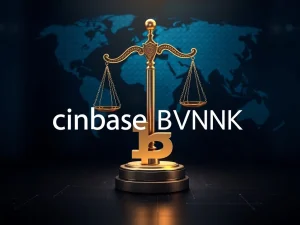Shocking Exit: Ethena Labs Halts German Operations Amidst BaFin’s USDe Stablecoin Crackdown

In a surprising turn of events, Ethena Labs, the developer behind the innovative synthetic stablecoin USDe, is pulling out of the German market. This shocking decision follows a recent agreement with BaFin, Germany’s Federal Financial Supervisory Authority, casting a spotlight on the intensifying regulatory landscape for crypto assets in Europe’s economic powerhouse. What does this mean for the future of stablecoins and crypto businesses operating within the EU’s jurisdiction? Let’s dive into the details.
Why is Ethena Labs Leaving Germany? Understanding the BaFin Agreement
Just weeks after BaFin raised concerns about “deficiencies” related to Ethena Labs’ dollar-pegged USDe stablecoin, the crypto firm has decided to wind down its German subsidiary, Ethena GmbH. According to an official announcement on April 15th, Ethena Labs reached a formal agreement with BaFin to cease all German operations. This agreement effectively means Ethena Labs will no longer pursue MiCAR authorization in Germany, signaling a significant shift in their European strategy.
But what exactly triggered this regulatory action? Back in March, German regulation authorities froze USDe token offerings, citing alleged compliance breaches and potential violations of securities law. While Ethena Labs maintains that its German entity hasn’t facilitated any minting or redemption of USDe since March 21st (the day BaFin intervened), the decision to exit the market speaks volumes about the current regulatory climate.
Ethena Labs clarified that users previously interacting with their German subsidiary have been onboarded with Ethena (BVI) Limited, ensuring continued service, albeit outside the German regulatory framework.
MiCA’s Shadow: How EU Regulation Impacts Stablecoins Like USDe
The backdrop to this development is the impending Markets in Crypto-Assets Regulation, or MiCA. This comprehensive EU framework is designed to bring clarity and control to the cryptocurrency space, particularly concerning stablecoins. MiCA aims to enforce stringent compliance standards and bolster consumer protection across the European Union. For stablecoin issuers, MiCA introduces several key requirements:
- Adequate Reserves: Stablecoins must be backed by sufficient reserves to maintain their peg.
- Asset Segregation: Reserve assets must be kept separate from the issuer’s own funds and user assets.
- Reporting Obligations: Regular and transparent reporting to regulatory bodies is mandatory.
As of February, ten stablecoin issuers had already gained approval under MiCA, including notable names like Circle and Crypto.com. Interestingly, while several euro-pegged and dollar-pegged stablecoins have received the green light, Tether (USDT), the issuer of the largest stablecoin, has notably chosen not to pursue MiCA registration at this time.
USDe Stablecoin: A Unique Approach and Regulatory Scrutiny
Unlike dominant stablecoins like USDT and USDC, Ethena’s USDe stablecoin employs a distinctive mechanism to maintain its dollar peg. This involves an automated delta-hedging strategy, combining spot holdings, on-chain custody, and liquidity buffers. This innovative approach, while potentially offering benefits, also appears to be attracting heightened regulatory scrutiny.
Despite the regulatory headwinds, USDe has rapidly grown to become the fourth-largest stablecoin, boasting a circulating value of approximately $4.9 billion, according to CoinMarketCap. The overall stablecoin market, dominated by USDT and USDC, is valued at a substantial $233 billion.
What Does This Mean for the Future of Crypto Regulation in Germany and Beyond?
Ethena Labs’ exit from Germany serves as a stark reminder of the evolving regulatory landscape for cryptocurrencies in Europe. German regulation, often seen as a bellwether for EU policy, is clearly taking a proactive stance on stablecoin compliance. This incident raises several critical questions:
- Increased Scrutiny: Will other crypto firms face similar regulatory pressure in Germany and across the EU as MiCA implementation progresses?
- Stablecoin Landscape Shift: Could MiCA reshape the stablecoin market, favoring compliant issuers and potentially impacting the dominance of current market leaders?
- Innovation vs. Regulation: How can the crypto industry balance innovation with the need for robust regulatory frameworks to protect consumers and maintain financial stability?
The situation with Ethena Labs and BaFin underscores the urgent need for crypto businesses to prioritize regulatory compliance, particularly as frameworks like MiCA become increasingly influential. While innovation remains crucial, navigating the complexities of global regulations is becoming a defining factor for success and sustainability in the cryptocurrency space.
As the crypto landscape continues to evolve, staying informed and adaptable to regulatory changes will be paramount for all stakeholders. The Ethena Labs situation is a key development to watch, as it may signal broader trends in crypto regulation within Europe and beyond.







